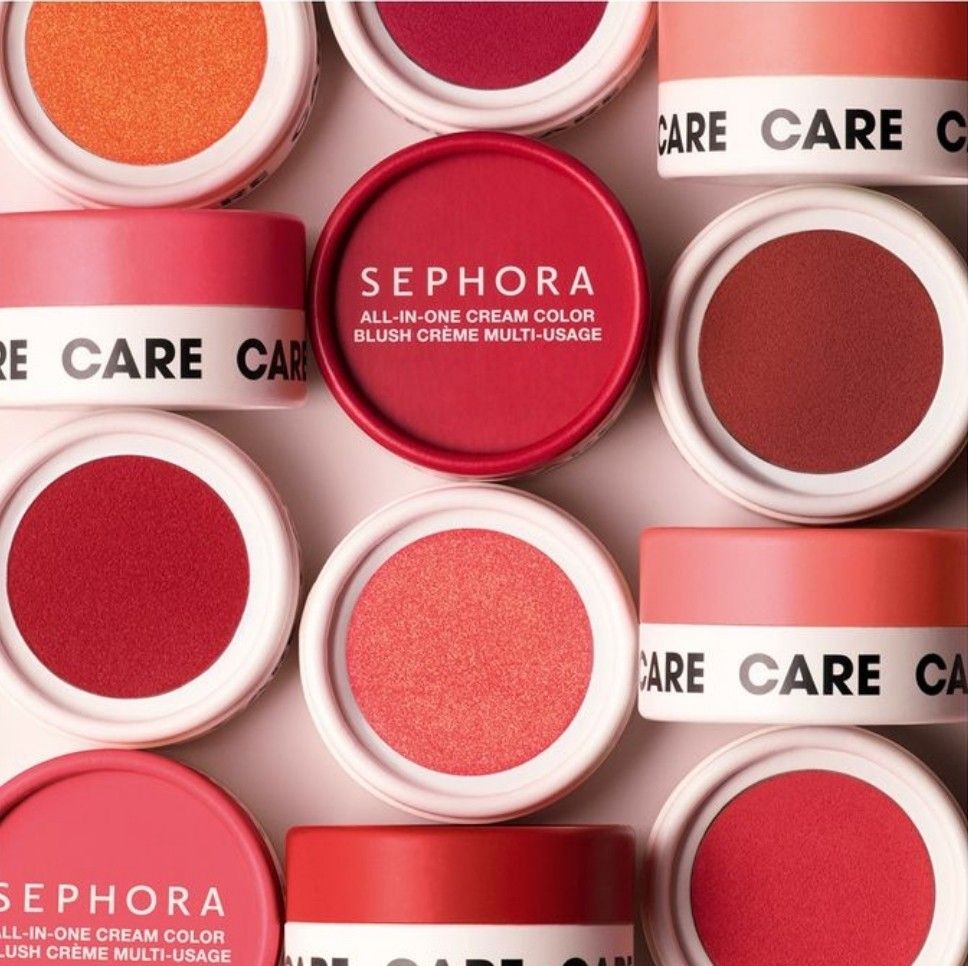
You’ve heard the debate. Cream or powder blush – which is better? Maybe you’re loyal to one or the other. Or perhaps you use both but can’t decide when to use which. Blush is an essential for that natural, flushed look. But with so many options out there, it can be hard to know whether cream or powder blush is right for you. In this quick guide from Sephora, we’ll break down the pros and cons of each so you can decide what works best for your skin type and makeup routine. We’ll look at application tips, longevity, how each wears throughout the day, and more. By the end, you’ll know exactly when to grab your favorite powder compact or cream pot – no more blush confusion. Let’s dive in!
Cream vs Powder Blush: The Key Differences
A cream blush typically contains emollients that provide moisture, giving your cheeks a dewy, natural glow. Powder blush, on the other hand, contains finely milled pigments that provide color without adding extra moisture.
Formula
Cream blushes have a creamy, lightweight formula, as the name suggests. They blend in seamlessly with your skin and leave a radiant finish. Powder blushes come in a loose or pressed powder formula. They provide buildable coverage but can look dry or cakey if overapplied.
Application
Cream blushes are best applied with your fingers, a sponge, or a stippling brush. Gently dab on and blend in circular motions. Powder blushes are best applied with a powder blush, blush brush, or fluffy powder brush. Tap off excess powder and gently sweep onto the apples of your cheeks. Build up gradually until you achieve your desired intensity.
Longevity
Powder blushes typically last longer on the skin compared to cream blushes. They are less prone to smudging or fading throughout the day due to their powdery formula. Cream blushes provide a beautiful natural flush upon application but may require touch ups as they can fade more quickly.
Whether you prefer a creamy, dewy finish or a soft, matte glow, choosing between a cream or powder blush comes down to your personal preferences and skin type. Experiment with different options to find the formula and shades that complement your complexion the best. With the variety of blush options available today, you really can’t go wrong.

Which Blush Is Best for Your Skin Type?
Normal to Dry Skin
If you have normal to dry skin, cream blush is the way to go. Cream blushes contain moisturizing ingredients like jojoba oil and shea butter to hydrate your skin while adding color. They provide a dewy, glowing finish that will make your skin look fresh and healthy. Some great cream blush options for normal to dry skin include NARS The Multiple or Glossier Cloud Paint.
Oily or Acne-Prone Skin
For oily or acne-prone skin, powder blush is your best bet. Powder blushes are oil-absorbing and won’t clog your pores or irritate breakouts. They provide a soft, diffused color on the skin without looking greasy. Popular powder blush choices for oily skin include bareMinerals READY Blush and tarte Amazonian clay 12-hour blush.
Sensitive Skin
If you have sensitive skin, mineral powder blush and hypoallergenic cream blush are good options. Mineral powder blush contains natural minerals like mica and iron oxides instead of potential irritants like synthetic dyes. Hypoallergenic cream blushes are formulated without common allergens and fragrances. Two great sensitive skin-friendly blush choices are Jane Iredale PurePressed Blush and Almay Smart Shade Blush.
No matter your skin type, the right blush can make you glow. Choose a formula that complements your skin and a shade you love, then get ready to blush with confidence!

How to Apply Cream and Powder Blush for a Flawless Sephora Look
Cream Blush
For a dewy, natural glow, cream blush is your best friend. Dot it onto the apples of your cheeks and blend upwards along your cheekbones using your fingers or a small stipple brush. Start with a little and build up gradually until you get the look you want. The key is to blend well so there are no visible edges or streaks. If you have oily or acne-prone skin, stick to oil-free cream blush formulas to avoid clogging pores.
Powder Blush
Powder blush is perfect for those with normal to oily skin or who prefer a matte finish. Using a fluffy powder brush, swirl it into your powder blush and tap off any excess. Apply to the apples of your cheeks and sweep up towards your hairline using small circular motions. Focus the color on the center of your cheeks and blend outwards. Add a second layer for more intensity. For easier blending, use a powder blush that is one or two shades darker than your natural flush.
The difference between cream and powder blush comes down to the finish. Creams provide a dewier, more natural look while powders result in a matte, velvety finish. In the end, it comes down to your personal preference and what you think complements your skin type and desired look best. Don’t be afraid to experiment with different blush formulas and shades to find one that makes you look and feel your most flawless self.
Conclusion
So there you have it – the complete lowdown on cream versus powder blush. Choosing between the two really comes down to your skin type and personal preference. If you have dry skin, creams will give you that dewy, glowing flush. For oily complexions, powders are the way to go for longer wear. Either way, apply with a stippling or dabbing motion for the most natural effect. Don’t be afraid to experiment with both formulas – you may just find your perfect match. The most important thing is that your blush makes you look healthy and vibrant. Makeup should be fun, so go ahead and play around. Find what works best for you and rock that natural flush.



